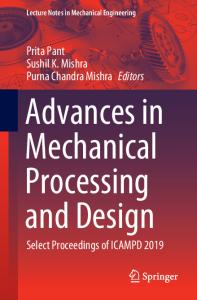Effect of Harmonic Microstructure on the Corrosion Behavior of SUS304L Austenitic Stainless Steel
- PDF / 3,034,889 Bytes
- 11 Pages / 593.972 x 792 pts Page_size
- 19 Downloads / 376 Views
I.
INTRODUCTION
MATERIAL scientists and engineers are continuously involved in improving the properties of materials for better utilization. The contribution of the concept of the structure–property relationship has been proven to be vital in this quest. In this context, the classic work of Hall and Petch, famously known as the Hall–Petch relationship,[1] has played a pivotal role. This relationship suggests that the strength of material increases with the decrease in grain size. The past decades have witnessed high strength of nanocrystalline/ultrafine-grained (NC/UFG) materials developed via different processing routes such as high-energy ball milling,[2,3] severe plastic deformation of bulk material such as equal-channel angular pressing[4,5] and ultrasonic shot peening,[6,7] crystallization of amorphous precursors,[8] and electrodeposition.[9] These homogeneous NC/UFG materials suffer from a serious problem of extremely low ductility. In order to introduce ductility in the NC/UFG materials, bimodal structures have been introduced.[10–13] Plastic deformation of bimodal grain sized materials has been reported to be highly heterogeneous. Heterogeneity depends not only on the volume PRABHAT K. RAI, Ph.D. Student, S. SHEKHAR, Assistant Professor, and K. MONDAL, Associate Professor, are with the Department of Materials Science and Engineering, Indian Institute of Technology Kanpur, UP 208016, India. Contact e-mail: kallol@ iitk.ac.in M. NAKATANI, Ph.D. Student, is with the Graduate School of Science and Engineering, Ritsumeikan University, Kusatsu, Shiga 5258577 Japan, M. OTA, Assistant Professor, and K. AMEYAMA, Professor, are with the Faculty of Science and Engineering, Ritsumeikan University, Kusatsu, Shiga 5258577, Japan. S.K. VAJPAI, Postdoctoral Fellow, is with the Research Organization of Science and Technology, Ritsumeikan University, Kusatsu, Shiga 5258577, Japan. Manuscript submitted February 22, 2016. Article published online October 20, 2016 METALLURGICAL AND MATERIALS TRANSACTIONS A
fraction of coarser grains but also on the grain size distribution.[14] Although an increase in ductility has been observed, it is extremely difficult to control the topology of grain size distribution by most of the available methods of preparing bimodal structure.[15] As a solution to the aforementioned problem with the NC/ UFG materials, Ameyama and co-workers proposed the concept of ‘‘harmonic’’ structure design in materials, which has resulted in an ideal combination of high strength and ductility.[16–19] Harmonic structure is a bimodal structure with a specific topology of fine and coarse grains in a periodic or harmonic order. In this approach, high-energy ball milling is used under optimized parameters of ball-to-powder ratio, ball size, duration, and speed (rpm) of milling.[20,21] Apart from mechanical properties, corrosion behavior of materials is highly dependent on grain refinement, as grain boundaries are highly reactive sites in the materials. The effect of grain size on the corrosion behavior has been studied extensive
Data Loading...










